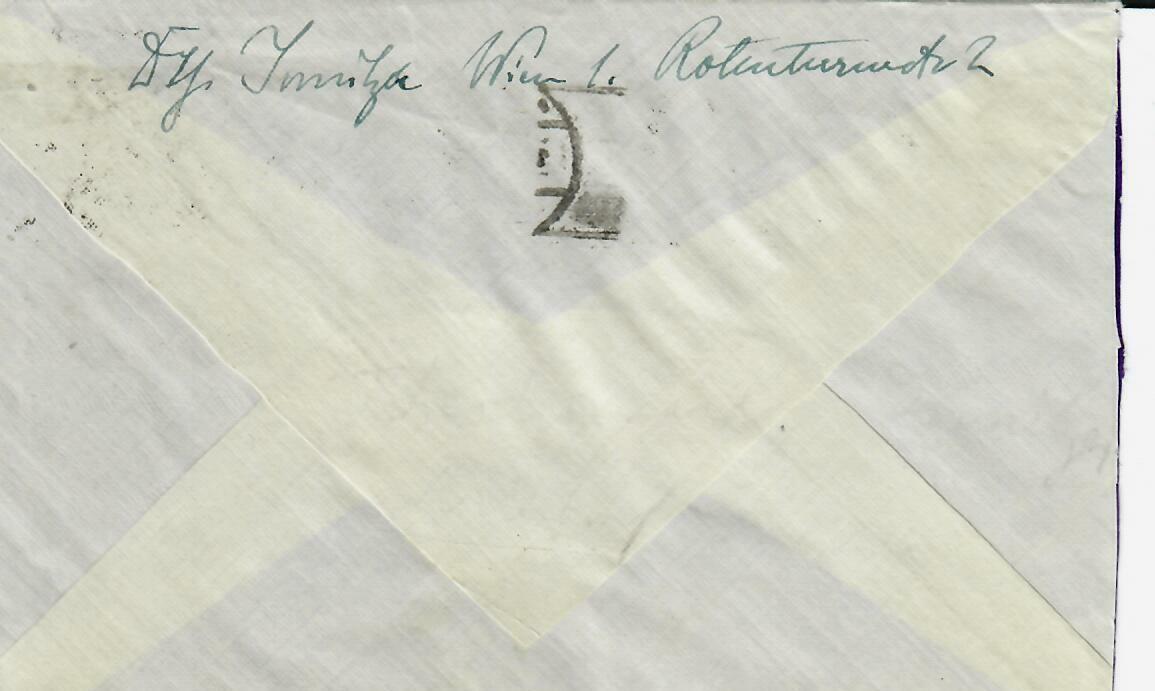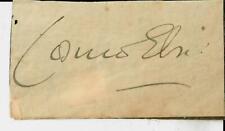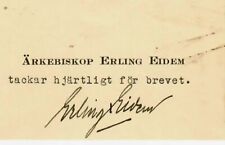

|
Site Categories |

|
Featured Items |

Poodle, Spaghetti Trim, Ucagco


|
"Archbishop of Vienna" Theodor Innitzer Hand Written Envelope COA For Sale


When you click on links to various merchants on this site and make a purchase, this can result in this site earning a commission. Affiliate programs and affiliations include, but are not limited to, the eBay Partner Network.

"Archbishop of Vienna" Theodor Innitzer Hand Written Envelope COA:
$299.99
Up for sale"Archbishop of Vienna" Theodor Innitzer Hand Written Envelope.This item is authenticated by Todd MuellerAutographs and comes with their Certificate of Authenticity.
ES - 5184
TheodorInnitzer(25December 1875 – 9 October 1955) wasArchbishop of Viennaand acardinal of the Catholic Church. Innitzerwas born in Neugeschrei (Nové Zvolání), part of the townWeipert(Vejprty)inBohemia,at that timeAustria-Hungary, (nowCzechRepublic). He was the son of a passamentier Wilhelm Innitzer inVejprty, House Nr. 362, later a textile factory worker, and his wife Maria bornSeidl, daughter of a mining clerk. After completing the minimum mandatoryschool, Innitzer became an apprentice in atextilefactory. Thedeanofhis home parish supported the young Theodor, which allowed him to attendagymnasium(1890–1892 inKaaden(Kadaň).Innitzer's role in early 20th century Austrian history remains disputed,because of his involvement in politics.After initially offering supportto theAnschluss, Innitzer became a critic of the Nazis and wassubject to violent intimidation from them. Thisassessment stems from his cooperation with theAustro-fascistgovernmentofEngelbert DollfußandKurtSchuschniggfrom 1934 to 1938, which based many of its economicandsocial policies on the teachingsofthe Catholic Church. He and the other Austrian Catholicbishopssigned a declarationendorsing theAnschluss, set up byGauleiterJosef Bürckel,and signed by Innitzer with "Heil Hitler!".Without the bishops' consent the Nazi regime disseminated this statementthroughout theGerman Reich. Upon hearing of this act,Pope Pius XIorderedCardinal Innitzer to sign a clarification, which was then published inL'Osservatore Romano.[ Vatican Radiohadrecently broadcast a vehement denunciation of the Nazi action, and CardinalPacelli (soon to becomePope Pius XII)ordered Innitzer to report to theVatican.Before meeting with Pius XI, Innitzer met with Pacelli, who had been outragedby Innitzer's statement. He made it clear that Innitzer needed to retract andwas made to sign a new statement, issued on behalf of all the Austrian bishops,which provided: "The solemn declaration of the Austrian bishops... wasclearly not intended to be an approval of something that was not and is notcompatible with God's law". The Vatican newspaper also reported that thebishops' earlier statement had been issued without the approval of theHoly See,with the fairly neutral Pope Pius XI disagreeing totally with Innitzer. Inthe subsequent months Germany had cancelled theconcordatbetweenitself and the Holy See and prohibited Church institutions and Catholicnewspapers. Following theAnschluss, the Nazi regime proceeded torepress the Catholic Church – arresting clergy, closing schools andinstitutions. Innitzer protested, at first privately, and later publicly. InApril 1938, in honour ofHitler's birthday, Cardinal Innitzer hadordered that all Austrian churches fly the swastika flag, ring bells, and prayfor Hitler. Despite this Innitzer called a day of prayer in theCathedral ofSt. Stephenof Vienna for 7 October 1938, which was attended byalmost 9,000 parishioners, mostly young people. In the sermon Innitzer declaredthat "we must confess our faith in ourFührer,for there is just one Führer: Jesus Christ", which greatly angered theNazi leaders: about 100Nazis, among them many older members oftheHitler Youth, ransacked the archbishop'sresidence the very next day.InBritain, theCatholic Heraldprovided the followingcontemporary account on 14 October 1938: Theinvasion was a reply to a courageous sermon the Cardinal had preached in theCathedral earlier in the evening, in which the Cardinal told his packedcongregation that " in the last few months you have lost everything!' Thissermon marked the end of Cardinal Innitzer's attempt to establish a religiouspeace with the Nazis. The attempt has failed. Cardinal Innitzer is now in linewith his German brothers openly urging Catholics to resist anti-Catholicmeasures. [-] Nazi mobs have penetrated into the Archbishop's Palace on St.Stephen's Square in Vienna and have demolished part of the furniture. Otherfurniture, as well as files and documents were thrown through the windows andset on fire. Hostile cries like "down with the clergy," "sendthe Cardinal into a concentration camp," "traitor bishop" and soon were heard. nnitzer's ambiguous relationship with the Nazi regime broughthim a lot of criticism afterWorld War II(hewas referred to as the "Heil Hitler Cardinal").[ Duringthe War Innitzer was critical of theanti-Semiticandracist policies of the Nazis towards theAustrian Jewsandalso the Catholicgypsiesof the Austrian countryside.[He openly, though moderately, supported thewar effortagainsttheSoviet Union,however. Years before, he had campaigned against Soviet policies. In 1933,based on data collected by undercover investigation and photographs, Innitzersought to raise awareness in the West of themany deathsby hungerand even cases ofcannibalismthatwere occurring in theUkraineand theNorthCaucasusat that time. InOctober 1944 Innitzer preached in the parish of Vienna- Reindorf , which alsoincluded members of the NSDAP local group who listened and wrote a report aboutit. In their report, they criticized that Innitzer's speech was "cleverlydemoralized". Thereby, statements like the following are thought: “You don'tknow what will come. It is possible that Vienna will also become a theater ofwar. ”However, Innitzer attributed the war to God directly; he saw it as apunishment for misconduct by the people. Innitzer also expressed his regret forthe low participation in church life: children grow up without Communion andconfession, have no religious instruction at school, there are no moreseminaries, and only one sixth of the Catholics go to Holy Mass. Suchindications can also be understood as indirect criticism of the NationalSocialist government, since their measures have suppressed the church'sinfluence.

|
|
Related Items:
"Archbishop of Canterbury" Cosmo Gordon Lang Clipped Signature COA $279.99

"Archbishop of Uppsala" Erling Eidem Signed Card COA $209.99

RARE "Archbishop of Canterbury" Frederick Temple Cut Signature $104.99
|
|


|
Shopping Cart  |

|
Recently Viewed |

|
Latest Items |

|
Facebook |
Secure Websites

|








